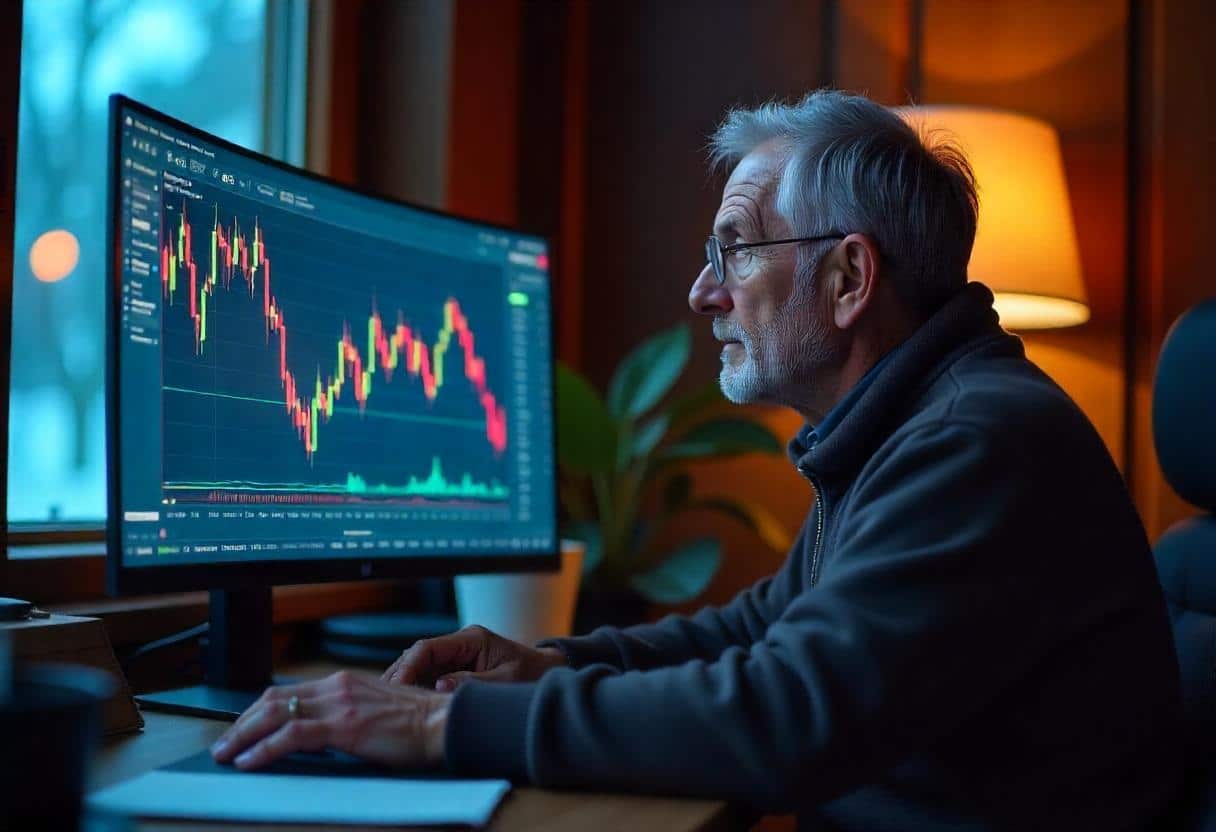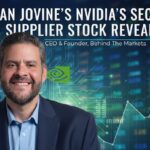March 31, 2025, closed the first quarter with a volatile flourish, as the U.S. stock market wrestled with a cocktail of economic uncertainty, policy shifts, and global headwinds. The day saw major indices—the Dow Jones Industrial Average, S&P 500, and Nasdaq Composite—swing dramatically, reflecting investor angst over President Donald Trump’s impending tariff announcements and a slew of mixed economic signals. With the quarter ending on a note of unease, Wall Street’s attention turned to the week ahead, where “Liberation Day” tariff details and critical jobs data promised to shape the market’s trajectory.
The broader context of 2025 has been one of correction and consolidation. After a robust 2024, the S&P 500 and Nasdaq entered the year grappling with their worst quarterly declines since 2022, driven by fears of a slowing economy and inflationary pressures from new trade policies.
Gold hit record highs as a safe-haven asset, while bonds saw renewed interest amid falling yields. For investors, March 31 was a microcosm of the year’s challenges: a battle between fear and opportunity.
This article dives into the day’s market performance, the forces at play, sector-specific outcomes, and expert views, while recommending three investment services—Chaikin Power Portfolio, AI Revolution Portfolio, and Trade Cycles—to help navigate these turbulent waters.
Recommended:

50-year stock market legend Marc Chaikin just revealed his “secret weapon”… along with a powerful, little-known strategy that could help you potentially lock in rapid returns – even as markets crumble. Marc says that in the coming months, you are going to need it. So if you have any money in the market, you need to see this now.
Market Overview: A Day of Sharp Swings
March 31 opened with a steep decline across U.S. equity markets, as early trading reflected global sell-offs triggered by Trump’s weekend remarks on universal tariffs. The Dow Jones Industrial Average plummeted nearly 770 points mid-session, dipping below 41,000, before staging a dramatic recovery to close at 41,999.65, up 415.75 points or 1.00%. The S&P 500 followed a similar arc, falling as much as 1.7% intraday before ending at 5,611.93, a gain of 31.68 points or 0.57%. The Nasdaq Composite, however, couldn’t shake its tech-driven woes, closing at 17,294.96, down 28.03 points or 0.16%.
The CBOE Volatility Index (VIX) spiked to 21.65, its highest in two weeks, signaling heightened investor anxiety. Trading volume was subdued at 14.3 billion shares, below the 20-session average of 16.2 billion, hinting at caution ahead of a pivotal week. X posts captured the day’s rollercoaster in real-time: one user noted the Dow’s midday turnaround after 90 minutes, while another pegged early losses at 1.29% for the S&P 500, 0.68% for the Dow, and 2.26% for the Nasdaq, underscoring tech’s vulnerability.
For the month, the indices painted a grim picture. The S&P 500 was down 9.17% from its February peak, officially in correction territory, while the Nasdaq’s quarterly loss hit 10.3%, its worst since Q2 2022. The Dow, despite its late rally, remained underwater year-to-date. This backdrop framed March 31 as a day of reckoning, with investors seeking clarity amid a storm of uncertainty.
Key Influencing Factors
Several forces converged to shape March 31’s market dynamics, with Trump’s tariff agenda looming largest. Over the weekend, the President doubled down on plans for “reciprocal” tariffs averaging 15%, targeting all trading partners, with details slated for April 2. This followed earlier levies on steel, aluminum, autos, and Chinese goods, stoking fears of a global trade war. Analysts warned of rising costs, inflationary pressures, and a potential GDP hit, with Goldman Sachs estimating a 0.5% growth reduction per 5% tariff increment.
Economic data added fuel to the fire. The Atlanta Fed revised its Q1 GDP forecast to a 2.1% contraction, down from 1.6%, amplifying recession concerns. Inflation expectations surged, with the University of Michigan reporting short-term outlooks at 5%—a two-year high—and long-term forecasts at 4.1%, unseen since 1993. These figures pressured the Federal Reserve, which held rates at 4.25%-4.50% in January, to reconsider its stance, though markets saw only an 18% chance of a May cut per the CME FedWatch tool.
Globally, the tariff threat rippled outward. Japan’s Nikkei 225 shed 4%, South Korea’s Kospi fell 3%, and Europe’s STOXX 600 hit an eight-week low, down 1.4%. The U.S. 10-year Treasury yield dipped to 4.22% from 4.32%, signaling a flight to safety, while gold soared to $3,128.06 per ounce. Corporate news also swayed sentiment: Rocket Companies dropped after a $9.4 billion acquisition of Mr. Cooper Group, which rose, and Tesla slid 1.7%, dragging its year-to-date loss to 35.8% amid tariff and brand woes.
Sector-Specific Impacts
The day’s volatility highlighted stark sectoral divides. Financials and consumer staples shone, buoying the Dow and S&P 500. The Financials Select Sector SPDR (XLF) gained as Discover Financial Services and Capital One Financial rose on merger optimism. Consumer staples, a defensive haven, advanced, with the S&P 500 Consumer Staples Sector Index (.SPLRCS) up amid recession fears. Energy stocks rallied with rising crude prices after Trump hinted at curbing Russian shipments, lifting the Energy Select Sector SPDR (XLE).
Tech and consumer discretionary sectors, however, faltered. The Technology Select Sector SPDR (XLK) and Consumer Discretionary Select Sector SPDR (XLY) saw weekly losses of 2.4% and 3.1%, respectively, persisting into March 31. The “Magnificent Seven” megacaps—Apple, Nvidia, Tesla, and others—deepened their quarterly rout to 16%, with Tesla’s 43% year-to-date drop raising AI bubble concerns. Communication services also weakened, with the Communication Services Select Sector SPDR (XLC) down 3% weekly, reflecting a broader shift to defensive assets.
Recommended Investment Services
Navigating 2025’s choppy markets demands robust tools and strategies. Here are three services to consider:
1. Chaikin Power Portfolio
The Chaikin Power Portfolio, from Chaikin Analytics, leverages Marc Chaikin’s 50-year Wall Street tenure and his Power Gauge system—a 20-factor model assessing financials, earnings, technicals, and expert sentiment. Priced at $2,500 annually, it offers a model portfolio, monthly updates, and bonus reports like “10 Stocks to Buy” and “10 Stocks to Avoid.” In 2024, it outperformed the S&P 500 by 12%, avoiding 15% average losses in its “Bottom 10.” For March 31’s volatility, its focus on fundamentally strong stocks—like financials—makes it ideal for identifying outperformers amid uncertainty. Beginners may find its depth daunting, but seasoned investors will appreciate its data-driven edge.
2. AI Revolution Portfolio
InvestorPlace’s AI Revolution Portfolio, led by Luke Lango, Eric Fry and Louis Navellier, targets AI-driven growth stocks. At $1,495 annually, it provides monthly picks, a 10-stock portfolio, and reports like “Hypergrowth AI Stocks.” Lango’s 2024 calls—like SoundHound AI (up 252%)—highlight its potential, though high-beta picks carry risk. On March 31, as tech struggled, this service could spot AI innovators poised for recovery, balancing growth with volatility. It’s beginner-friendly but lacks extensive historical data, making it a speculative play for risk-tolerant investors.
3. Trade Cycles
TradeSmith’s Trade Cycles, priced at $2,500 annually, uses algorithmic “pivot points” to time entries and exits across stocks, ETFs, and crypto. It includes weekly updates, a model portfolio, and tools like Trade360. While 2024 performance specifics are limited, its focus on cyclical trends—e.g., energy’s March 31 rally—offers precision in volatile markets. The proprietary nature of its algorithms may frustrate some, but its timing focus suits active traders seeking to capitalize on short-term swings.
These services cater to different needs: Chaikin for fundamentals, AI Revolution for growth, and Trade Cycles for timing—forming a toolkit for 2025’s challenges.
Expert Perspectives
Analysts offered varied takes on March 31. Michael Reynolds of Glenmede said, “Investors are hanging on every tariff word from the administration,” highlighting policy-driven uncertainty. Goldman Sachs raised its recession odds to 35% from 20%, forecasting three Fed rate cuts as tariffs bite, and cut its S&P 500 target to 5,700. Talley Leger of The Wealth Consulting Group warned of stagflation, noting, “This mix of slow growth and high inflation could be toxic for stocks.”
Charles Schwab’s Kevin Gordon pointed to declining yields and defensive sector strength as recession signals, while Liz Ann Sonders predicted “sub-surface churn” would persist, urging adaptability. On X, sentiment swung from despair—“Just keeps going DOWN”—to hope, with one user citing the Dow’s recovery as resilience. Marc Chaikin, via his Power Gauge, flagged a “stock-picker’s market,” a view echoed by these services’ tailored approaches.
Recommended:

You’re invited to beta test a powerful new calendar for today’s tricky market. It shows you when the biggest stock jumps could occur – to the DAY – with 83% backtested accuracy. In 2024 alone, it would’ve pointed to gains of 250% in 38 days on (TTWO)… 101% in 10 days on (WSM)… 353% in 48 days on (AON) and more in studies.
Try it yourself – right now – on 5,000 stocks.
Looking Ahead
The week following March 31 promised catalysts aplenty. Trump’s April 2 tariff details and April 3 auto-specific levies could clarify or deepen market fears. Friday’s nonfarm payrolls report, expected at 140,000 jobs, loomed as a recession litmus test. The Fed’s next moves remained murky, with Powell’s upcoming remarks under scrutiny. Globally, tariff fallout threatened trade partners like Mexico and Japan, while Europe’s relative strength—e.g., Germany’s 20% MSCI gain—offered contrast.
Investors eyeing these events could leverage the recommended services: Chaikin Power Portfolio for stability, AI Revolution Portfolio for AI upside, and Trade Cycles for tactical timing. Each addresses a facet of 2025’s complexity, from policy shocks to tech recoveries.
Conclusion
March 31, 2025, was a volatile snapshot of a market at a crossroads. The Dow’s rally and S&P 500’s modest gain hinted at resilience, but the Nasdaq’s tech-driven slump underscored broader risks. Tariffs, inflation, and recession fears dominated, pushing investors toward safe havens like gold and bonds while punishing growth stocks. Sector shifts—financials and staples up, tech and discretionary down—reflected a defensive tilt.
For investors, the day highlighted the need for strategic tools. Chaikin Power Portfolio offers a bedrock of fundamentals, AI Revolution Portfolio targets AI’s long-term promise, and Trade Cycles provides timing precision—together, a robust response to uncertainty. As Q2 begins, Wall Street braces for a defining week, with tariffs and jobs data set to steer the narrative. Whether March 31 was a trough or a pause, these services can guide investors through the storm, blending caution with opportunity in a year of flux.
FAQ: U.S. Stock Market on March 31, 2025
What happened to the major U.S. stock indices on March 31, 2025?
On March 31, 2025, the U.S. stock market experienced significant volatility. The Dow Jones Industrial Average closed at 41,999.65, up 415.75 points (1.00%), after dropping nearly 770 points intraday. The S&P 500 ended at 5,611.93, gaining 31.68 points (0.57%), despite a 1.7% mid-session decline. The Nasdaq Composite, however, finished at 17,294.96, down 28.03 points (0.16%), unable to recover fully due to tech sector weakness. The day reflected a late rally amidst broader quarterly losses, with the S&P 500 down 9.17% and the Nasdaq down 10.3% since February.
Why was the stock market so volatile on March 31, 2025?
The volatility stemmed from multiple factors. President Trump’s weekend comments on imposing 15% “reciprocal” tariffs on all trading partners, set for announcement on April 2, sparked fears of a global trade war. Economic data worsened the mood, with the Atlanta Fed forecasting a 2.1% Q1 GDP contraction and inflation expectations rising to 5% short-term and 4.1% long-term. Global markets—like Japan’s Nikkei (down 4%) and Europe’s STOXX 600 (down 1.4%)—also declined, amplifying U.S. uncertainty. The VIX spiked to 21.65, signaling investor anxiety.
Which sectors performed well or poorly on March 31, 2025?
Defensive sectors like financials, consumer staples, and energy outperformed. Financials rose with stocks like Discover Financial Services gaining on merger hopes, while consumer staples advanced as a safe haven. Energy rallied with crude oil prices after Trump’s hints at curbing Russian shipments. Conversely, technology and consumer discretionary sectors struggled, with the “Magnificent Seven” megacaps (e.g., Tesla, down 43% YTD) and communication services seeing persistent losses, reflecting a shift away from growth stocks amid recession fears.
How are Trump’s tariffs affecting the stock market?
Trump’s tariff plans, including earlier levies on steel, aluminum, and autos, and the looming 15% universal tariffs, raised concerns about higher business costs, reignited inflation, and slower GDP growth. Goldman Sachs estimated a 0.5% growth hit per 5% tariff increment, pushing recession odds to 35%. On March 31, these fears drove early sell-offs, though a late rally suggested some hope that details due April 2 might mitigate the worst-case scenarios. Tech and discretionary stocks, reliant on global supply chains, were hit hardest.
What economic data influenced the market on March 31, 2025?
Key data included the Atlanta Fed’s revised Q1 GDP forecast of a 2.1% contraction, signaling recession risks, and the University of Michigan’s inflation outlook, with short-term expectations at 5% (a two-year high) and long-term at 4.1% (highest since 1993). These figures raised doubts about Federal Reserve rate cuts, with only an 18% chance of a May reduction, contributing to market jitters and a flight to safe-haven assets like gold ($3,128.06/ounce) and bonds (10-year yield at 4.22%).
What are the Chaikin Power Portfolio’s key features, and how could it help on a day like March 31?
The Chaikin Power Portfolio, priced at $2,500/year, uses Marc Chaikin’s Power Gauge system, a 20-factor model analyzing financials, earnings, technicals, and sentiment. It offers a model portfolio, monthly updates, and reports like “10 Stocks to Buy.” Outperforming the S&P 500 by 12% in 2024, it excels at identifying strong fundamentals—ideal for spotting financials or staples that rallied on March 31—while avoiding losers, making it a steady hand in volatile markets.
How does the AI Revolution Portfolio work, and why might it be useful despite tech’s struggles?
The AI Revolution Portfolio, led by Luke Lango, Eric Fry and Louis Navellier,, targets AI growth stocks with monthly picks and a 10-stock portfolio. Despite tech’s March 31 weakness (e.g., Nasdaq down), its 2024 wins—like SoundHound AI (up 252%)—suggest potential for finding AI innovators poised for recovery.
What is Trade Cycles, and how could it assist in timing trades on a volatile day like March 31?
Trade Cycles, at $2,500/year, uses algorithmic “pivot points” to time trades across stocks, ETFs, and crypto, offering weekly updates and Trade360 tools. On March 31, its focus on cyclical trends—like energy’s rally—could have pinpointed entry/exit points during the Dow’s 770-point swing. While its algorithms are proprietary, its precision suits active traders looking to capitalize on short-term volatility.
What do experts say about the market outlook after March 31, 2025?
Experts were cautious. Goldman Sachs raised recession odds to 35% and cut its S&P 500 target to 5,700, expecting three Fed rate cuts. Michael Reynolds of Glenmede noted investors’ fixation on tariff details, while Talley Leger warned of stagflation risks. Schwab’s Kevin Gordon and Liz Ann Sonders highlighted defensive sector strength and predicted ongoing volatility. Marc Chaikin called it a “stock-picker’s market,” aligning with the recommended services’ tailored strategies.
What should investors watch for in the week following March 31, 2025?
Key events include Trump’s tariff details on April 2 and auto-specific levies on April 3, which could clarify market impacts. Friday’s nonfarm payrolls report (expected 140,000 jobs) will test recession fears—if weak, it could deepen sell-offs. Fed Chair Powell’s remarks will also be critical, as markets seek rate policy clues. Investors using Chaikin Power Portfolio, AI Revolution Portfolio, or Trade Cycles could leverage these catalysts for stability, growth, or timing, respectively.
Are these investment services worth the cost given the market’s uncertainty?
It depends on your goals. Chaikin Power Portfolio ($2,500) suits those seeking data-driven stability, with proven outperformance. AI Revolution Portfolio ($1,495) offers affordable growth potential for risk-takers, despite tech’s current slump. Trade Cycles ($2,500) appeals to active traders needing timing tools in volatility. Each addresses a facet of March 31’s chaos—fundamentals, AI upside, and tactical trades—making them valuable if aligned with your strategy.
How did safe-haven assets perform on March 31, 2025?
Safe-haven assets thrived amid uncertainty. Gold hit a record $3,128.06 per ounce, driven by inflation and tariff fears. The U.S. 10-year Treasury yield fell to 4.22% from 4.32%, reflecting bond demand as stocks wavered. This flight to safety underscored recession concerns, contrasting with equity markets’ late rally and highlighting a bifurcated investor mindset.
































